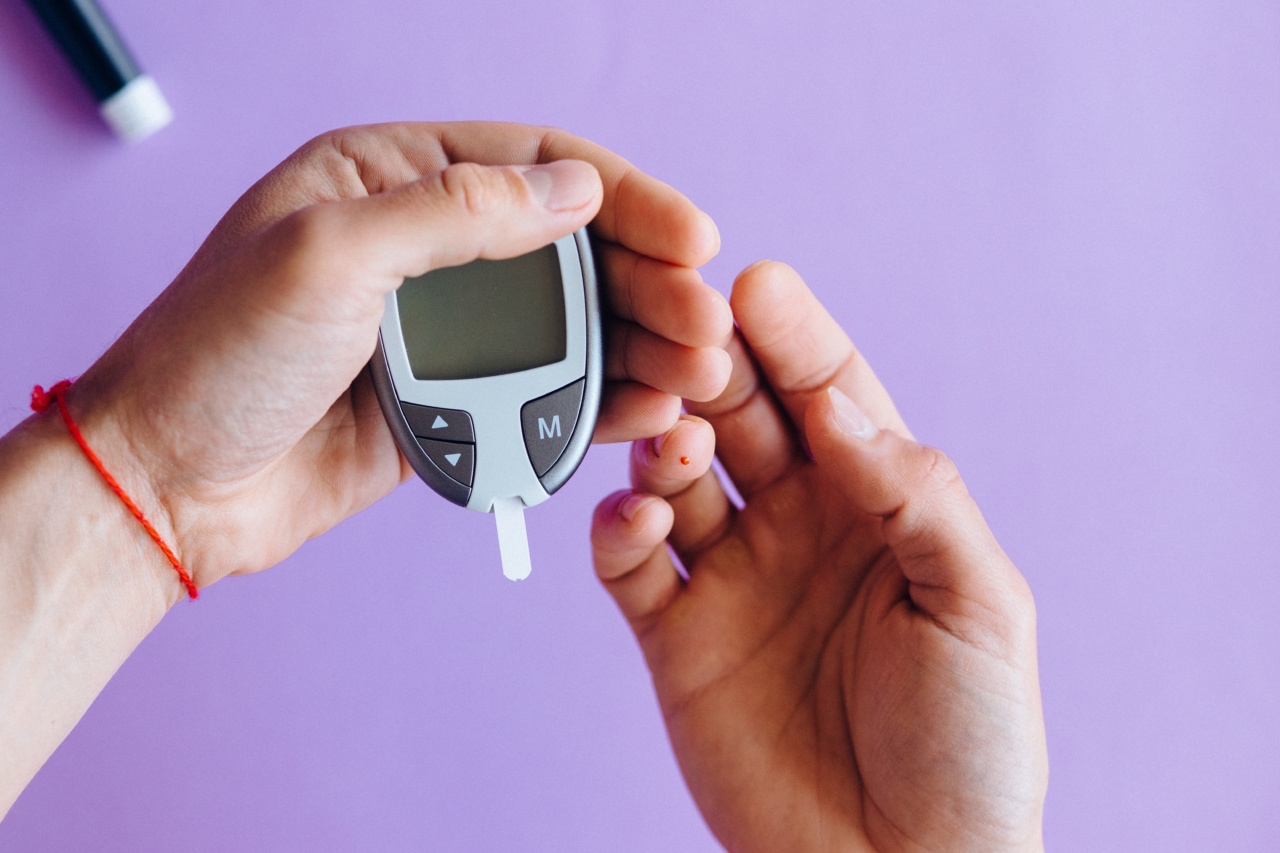Diabetes is a chronic condition that affects millions of people worldwide. One of the most common complications associated with diabetes is the development of diabetic retinopathy, a condition that affects the blood vessels in the retina of the eye.
However, what many people don’t realize is that low blood sugar, also known as hypoglycemia, can also have a significant impact on vision in diabetes patients. In this article, we will explore the dangers of low blood sugar on vision and discuss ways to prevent and manage this issue.
Understanding Diabetes and Blood Sugar Levels
Diabetes is a metabolic disorder characterized by high blood glucose levels. There are two main types of diabetes – type 1 and type 2. In type 1 diabetes, the body does not produce enough insulin, a hormone responsible for regulating blood sugar levels.
In type 2 diabetes, the body becomes resistant to the effects of insulin or does not produce enough insulin to maintain normal blood sugar levels.
When blood sugar levels are high, it can lead to various complications, including damage to blood vessels, nerves, and organs over time. Conversely, when blood sugar levels drop too low, it can result in hypoglycemia.
The Link Between Low Blood Sugar and Vision
Hypoglycemia is a common side effect of diabetes treatment, particularly in individuals who take insulin or certain oral medications to manage their blood sugar levels.
When blood glucose levels fall below normal, it can affect various body systems, including the eyes.
The retina, located at the back of the eye, is responsible for capturing visual stimuli and transmitting them to the brain. It requires a constant supply of oxygen and nutrients to function properly.
In diabetes patients who experience frequent episodes of low blood sugar, the retina may not receive an adequate blood supply, leading to temporary changes in vision.
Temporary Vision Changes
Low blood sugar can cause a range of temporary vision changes in diabetes patients. These changes can include blurred vision, double vision, and difficulty focusing.
Some individuals may also experience fluctuations in visual acuity or have trouble perceiving colors properly.
In most cases, these vision changes are reversible once blood sugar levels return to normal. However, repeated or prolonged episodes of low blood sugar can potentially damage the blood vessels in the eyes, leading to long-term vision problems.
Long-term Vision Complications
While temporary vision changes are a common occurrence in individuals with diabetes, it is important to recognize and address the potential long-term vision complications that can arise from low blood sugar.
1. Diabetic Retinopathy:.
Diabetic retinopathy is a serious eye condition that can cause progressive damage to the retinal blood vessels.
When blood sugar levels are consistently low, it can disrupt the normal functioning of these blood vessels, leading to leakage, swelling, and, in severe cases, the growth of new, abnormal blood vessels. Diabetic retinopathy is a leading cause of blindness in adults.
2. Macular Edema:.
Macular edema is a condition characterized by fluid accumulation in the macula, the central part of the retina responsible for sharp, detailed vision. Low blood sugar can disrupt the delicate balance of fluid in the retina, leading to macular edema.
This can cause blurry or distorted central vision, making it difficult to read, drive, or perform other visually demanding tasks.
3. Cataracts:.
Cataracts refer to the clouding of the eye’s natural lens. While cataracts can develop due to several factors, studies suggest a higher prevalence of cataract formation in individuals with diabetes.
Low blood sugar can increase the risk of cataract development, particularly in older individuals with diabetes.
4. Glaucoma:.
Glaucoma is a group of eye diseases characterized by increased pressure within the eye, damaging the optic nerve and potentially resulting in vision loss.
Diabetes patients who frequently experience low blood sugar may be at a higher risk of developing glaucoma.
Prevention and Management of Low Blood Sugar
Preventing and managing low blood sugar is crucial for diabetes patients to maintain optimal eye health. Here are some strategies to consider:.
1. Regular Blood Sugar Monitoring:.
It is essential to monitor blood sugar levels regularly to detect and prevent episodes of low blood sugar. Work closely with your healthcare team to establish target ranges and adjust your diabetes treatment plan as needed.
2. Consistent Carbohydrate Intake:.
Eating regular meals and snacks that contain a consistent amount of carbohydrates can help stabilize blood sugar levels and minimize the risk of hypoglycemia. Consult a registered dietitian to develop a personalized meal plan.
3. Medication Management:.
If you take medication to manage your diabetes, follow your prescribed dosages and schedules closely. Be aware of the potential side effects of your medication and discuss any concerns with your healthcare provider.
4. Awareness of Symptoms:.
Learn to recognize the early signs and symptoms of low blood sugar, which may include shakiness, sweating, confusion, anxiety, and blurred vision. Treating hypoglycemia promptly can help prevent vision complications.
5. Emergency Preparedness:.
Carry a source of fast-acting glucose, such as glucose tablets or gels, in case of a severe drop in blood sugar.
Inform friends, family members, and colleagues about your condition and teach them how to administer glucagon, a hormone that raises blood sugar levels, if necessary.
Conclusion
Low blood sugar can pose significant dangers to the vision of diabetes patients. It is vital for individuals with diabetes to prioritize blood sugar management to prevent or minimize the risk of vision complications.
Regular eye examinations, along with close collaboration with healthcare providers, can help ensure early detection and appropriate management of any eye-related concerns arising from low blood sugar. By taking proactive measures, individuals with diabetes can protect their vision and overall eye health, leading to a better quality of life.


























